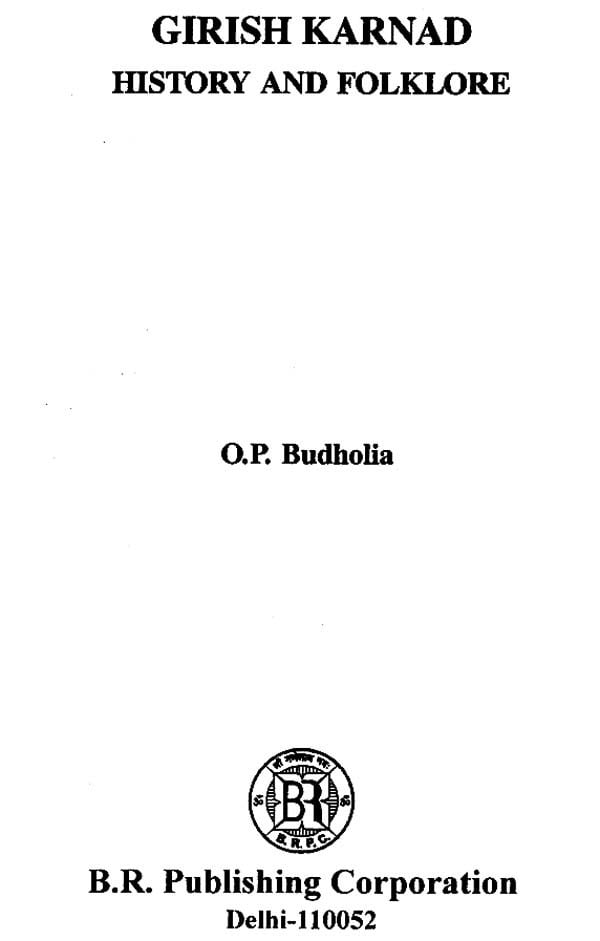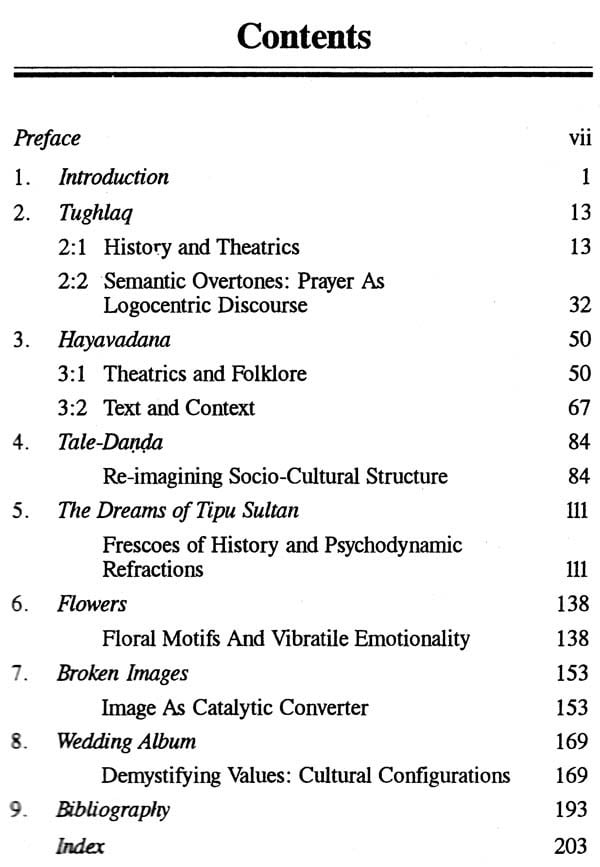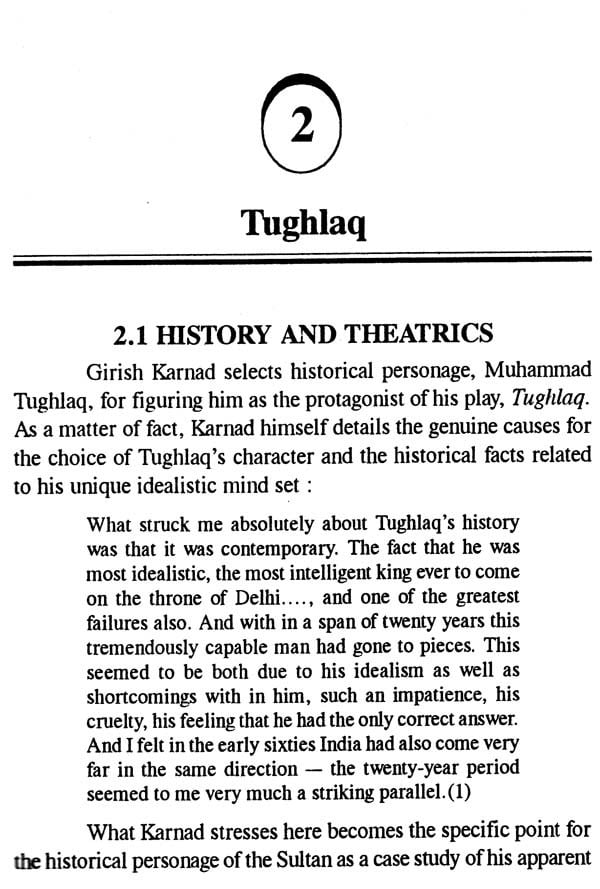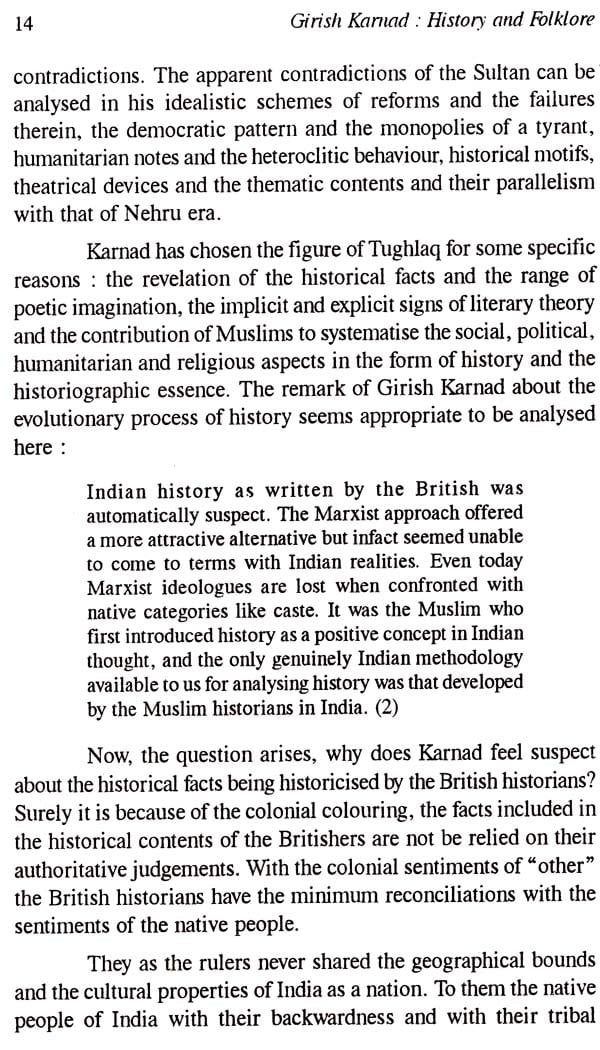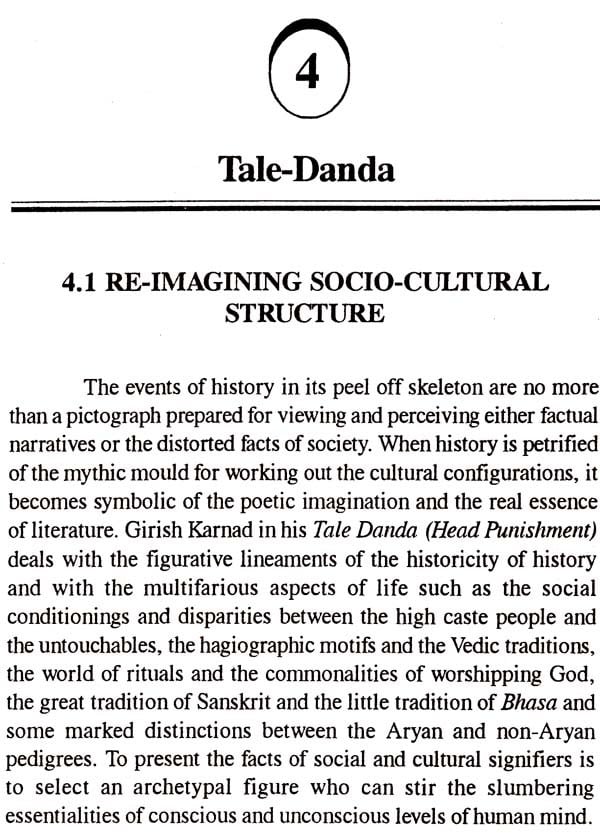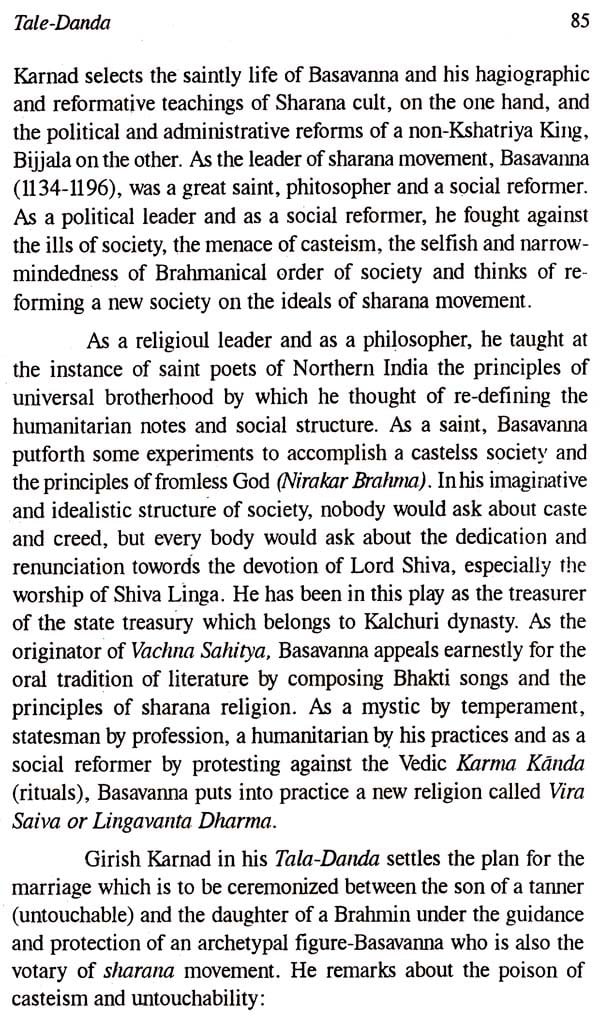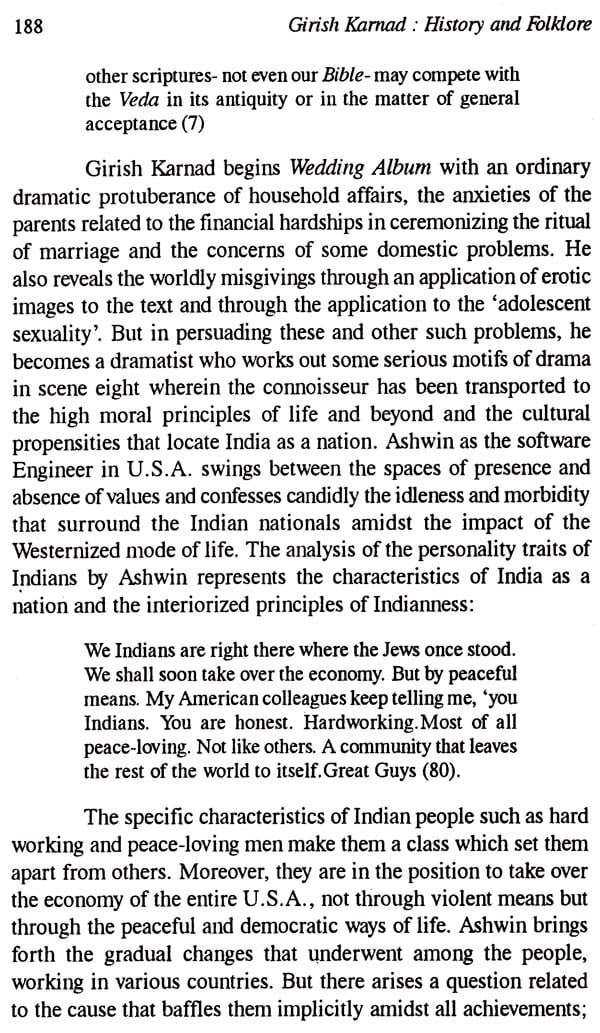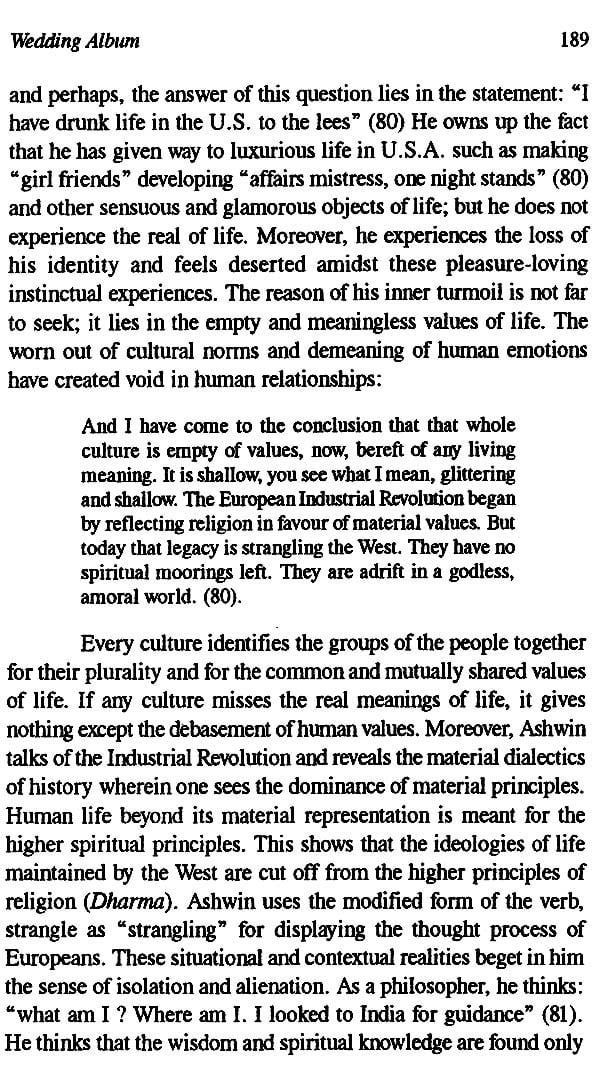About the Book The development of history as the written discourse came into existence for displaying history of man and his origin as home sapiens. Anthropologically, the incidents and events in the past were interpreted through myths, folk tales and the oral tradition. The development of nature and the development of history remain side by side and there is also a close relationship between nature and folklore. In India there one hardly sees the annals and the chronological arrangement of history except the tradition which existed and exists in the folk-memory of the people enmasse; History is not cyclic but predominantly linear while folk-memory is cyclic and dynamic. Karnad uses the sources of history and folklore in his plays just to reveal the sociocentric matrixes and its impact on human relationships. The present book apart from Introduction, includes nine sub titles out of its even core chapters. The three historical plays, Tughlaq, Tale-Danta and The Dreams of Tipu Sultan bring into being the historicity of history, vis-a-vis, the social, political and humanitarian concerns. Tughlaq with its historical facts and histrionics, explicates, some political issues of Nehruvian era. Tale-Danda with the charismatic personality of Basavanna analyses the social and religious reforms. The Dreams of Tipu Sultan brings into light the frescoes of history in order to show the distinction between Indian sense of tradition and the written scroll of history. The plays such Hayavadana and Flowers represent the folklore and the oral tradition of literature. Female-centric in their ideologies, these plays reveal the complicated world of human relationships and the cultural configurations. The remaining two plays, Broken Images and Wedding Album disperse the academic and social matrix. Broken Images as a dramatic monologue questions the case of plagiaristic disputes of a literary text and the distinction between English and Indian languages; Wedding Album works out the fibrous motifs and deals with the issues of social disintegration and the evasiveness of cultural values.
About the Authors Dr. Om Prakash Budholia has been teaching undergraduate and postgraduate classes for the last thirty years and presently he is Professor of English, Govt. KRG College, an autonomous College of Jiwaji University. Gwalior (M.P.) Apart from participating in so many seminars and conferences, he has delivered many lectures in U.G.C. sponsored refresher courses and other extension lectures in various colleges and universities of India. He is an Associate Editor of a reputed journal, The Journal of Contemporary Literature (Allahabad), an Assistant Editor of a renowned and scholarly journal, Points of View (Ghaziabad) and he is also on the Board of Advisors for the scholarly journals, The Quest (Ranchi), Labyrinth (Gwalior) The Expression (Rea Bareli) and Sodh Dhara (Drai). In addition to reviewing books, writing introductions and forwords, Dr. Budholia has published over thirty five papers and serious articles on English literature, Indian English Literature and Indian Poetics in various National / International journals and anthologies. He is well known for his books and research papers in India and abroad. Some of his notable full length studies are: George Eliot: Art and Vision in Her Novels (New Delhi: 1999), Anita Desai: Vision and Technique in Her Novels (New Delhi: 2001). Critical Essays on Indian English literature (Jaipur :2003) Girish Karnad : Poelics and Aesthetics (2010). He has also edited the following books: Generic Manifolds: Indian English Literature Since 1950 (New Delhi: 2007), Seeds in Spring: Contemporary Indian English Poetry, Drama and Critics (New Delhi:2008) and Indian English Literature: Retrospect and Prospect (Jaipur: 2010).
Preface Girish Karnad as a dramatist uses adeptly the historical personae and the folk motifs for the narratives of his dramatic art. Any text of literature is meant for revealing the sociocentric thought process with its universal appeal. Girish Karnad in some of his plays has worked out two specific devices: the motifs of history for universalizing the humanitarian notes and the use of folklore for unveiling the real intents of human mind. The operation of myths, symbols, oral tradition and the resorption of the historical facts make Karnad employ suggestive pattern which encompasses the codifying system of the associational clusters between the actors and the spectators.
The present book, apart from the inclusion of Introduction, incorporates the seven core chapters. Chapter first, Tughlaq deals with the historical facts and the theatrical motifs. It also explicates some political issues of Nehruvian era. Apart from the historical and political issues, the play works out incisively the theatrical motifs when the dramatist makes an application to the psychological and semantic theories in the text. Tale-Danda with the charismatic personality of Basavanna analyses the social matrix, religious reforms and finally reveals the sense of self-discipline and the strength of purpose for re-structuring a Șcasteless society. Chapter three The Dreams of Tipu Sultan, is not a mere skeleton of the historical events but it shows a deep analysis of the native and colonial forces, exhibiting the distinctive marks between Indian tradition and the Eurocentric reflections of historiography.
Introduction ndian theories of drama come out vehemently with the application to the theories of bhavas (sentitments) in the contents of the dramatic texts. The westernized form of the dramatic art stressed strongly on the vocables of the text. With the result, the dramatic texts written before 1947 produced the Eurocentric rhetorics and the specific semantics instead of creating the texts of emotive-contents based on Indian poetics; but the dramatic texts written after sixties re-awakened the theories of nativism and the sense of Indian culture. Natyasastra, a trealise written exclusively for the art of drama and dramaturgy, brings forth direct inspiration to the dramatists like Tagore, Sri Aurobindo, Lakhan Deo, Vijay Tendulkar, Girish Karnad, Mahesh Dattani and others for galvanizing the indigenous resources of their narratives. Along with the emergence of desi-form of the dramatic construction, the dramatists of the post-independence period developed an attitude to depoliticize and de-colonize the eurocentric thought-process. Thus, this kind of awakening to be one with Indian culture is the prime source to Indian dramatists for minimizing to a larger extents the colonial consciousness in Indian texts. These writers have also de-limited the space of sanskritization or the process of SCN03 Brahmanization for the larger unities of Indian nationals. The texts written in the colonial contexts worked out directly or indirectly the intents of Eurocentric ideologies. There are some critics who even find the equivalence of ideologies between the colonization and the sanskritization:
The colonizer's sense of culture and a Brahmanical sense of culture combined to produce a new language which some critics like Balchandra Nemade dismissed as Anglo-Bhat (not even Anglo native) language, making it sound as if it were some kind of comprador culture articulated in comprador language. Bhat in Marathi usage means Brahman often used pejoratively.
**Contents and Sample Pages**
